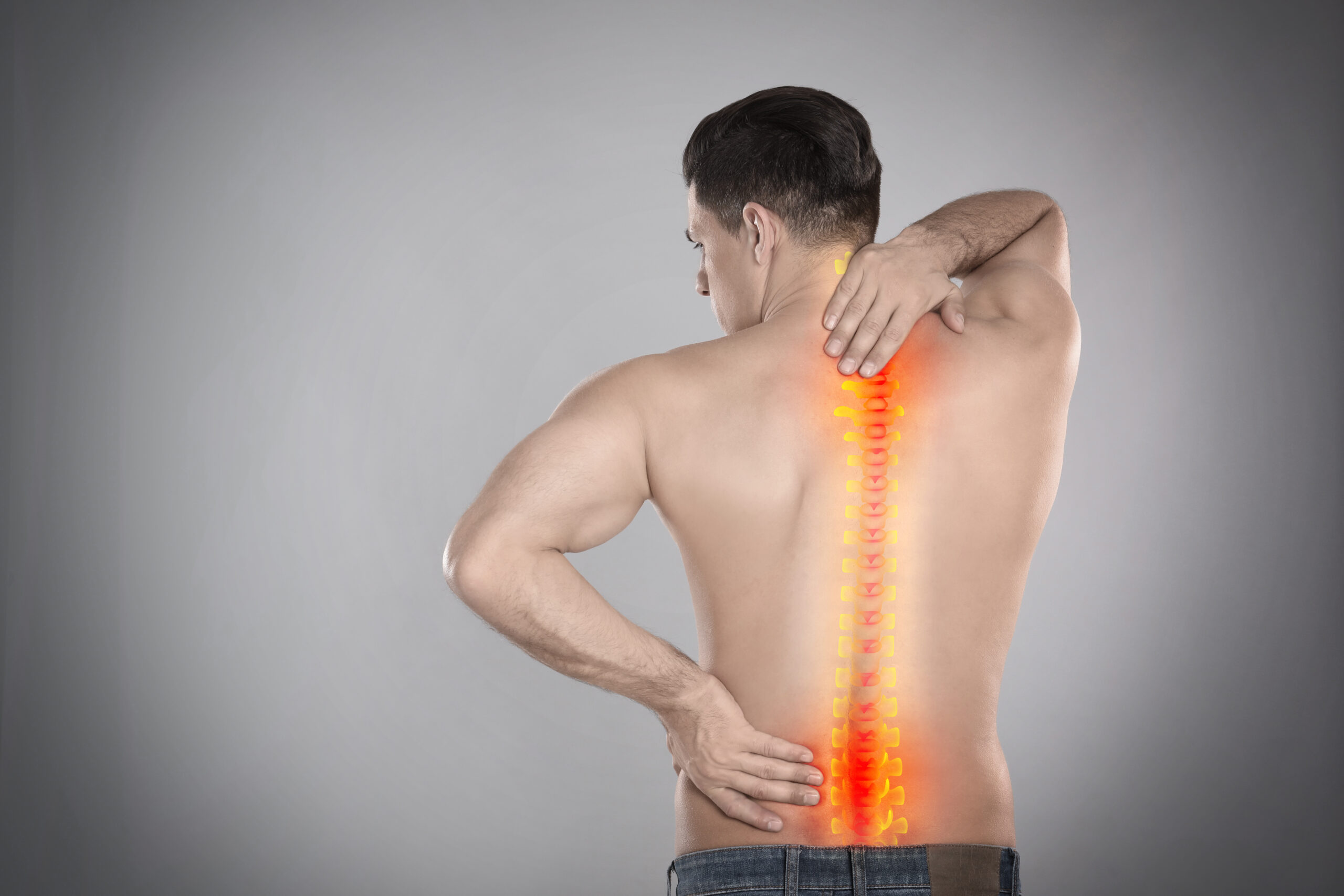What is muscle pain?
Muscle pain is a pervasive issue, considering the human body houses an extensive network of more than 600 muscles. This discomfort, referred to as myalgia, typically stems from temporary causes such as muscle overuse. However, it can also serve as an indicator of underlying complexities, especially when not associated with physical strain.
Myalgia, commonly known as muscle pain, encompasses sensations of discomfort in an individual muscle or a group of muscles. Additionally, it can extend to affect tendons, ligaments, and fascia, the connective tissue enveloping bones, organs, and muscles.
Muscle pain manifests in various forms, ranging from persistent aches to sudden, localized or widespread stabbing sensations. Several factors contribute to its occurrence, including excessive physical exertion, injuries, or underlying medical conditions. The presence of nerve endings in muscles and along arteries plays a role in transmitting pain signals triggered by factors like inflammation, impaired blood flow, or mechanical stress.
What are the types of muscle pain?
Muscle pain can be categorized into two distinct groups: pain associated with muscle activity and pain unrelated to muscle activity.
- Pain Related to Muscle Activity:
When pain is linked to muscle activity, it may manifest either during physical exercise or shortly thereafter, typically within a time frame of 24 to 48 hours. This category encompasses sensations like muscle soreness and stiffness, cramps, as well as strains. These discomforts are commonly experienced as a consequence of physical exertion.
- Pain Unrelated to Muscle Activity:
At times, muscle pain can emerge independently of any physical activity. Such pain may be attributed to various factors, including viral infections or underlying medical conditions that necessitate consultation with a doctor for diagnosis and treatment. In these instances, it is advisable to seek medical attention to address the underlying cause of the muscle pain.
What are the symptoms of muscle pain?
Muscle pain predominantly targets muscles in areas such as the arms, legs, back, shoulders, abdomen, and hips, although it can potentially impact any muscle throughout the body. This pain often presents with an array of associated symptoms, including:
– Shooting pains
– Numbness
– Muscle stiffness
– Pins and needles sensation
– A burning feeling
– Stabbing pains
– Discomfort or difficulty during specific movements
– Swelling
What are the causes of muscle pain?
Muscle pain, or myalgia, encompasses a wide spectrum of discomfort that can be attributed to various causes and conditions. While it is commonly experienced and often temporary, it can result from a multitude of factors, with some cases necessitating medical attention. Here is an expanded discussion on the potential causes and manifestations of muscle pain:
Muscle Pain Causes:
- Injury and Overexertion: A prevalent cause of muscle pain is physical injury or overexertion during activities. This includes incidents such as muscle cramping, which involves short and intense muscle contractions.
- Soreness and Stiffness: After physical activity, it is not uncommon to experience muscle soreness and stiffness. These sensations are a natural consequence of the inflammatory response in muscles following exertion.
- Muscle Spasms: Muscle spasms represent a more severe form of muscle stiffness, often associated with involuntary and prolonged contractions of muscle fibers.
- Muscle Tears: Muscle tears occur when there is partial breakage of a muscle and its surrounding envelope. The severity can vary, leading to discomfort and pain.
- Pulled or Strained Muscles: Muscles can sustain significant tears, commonly referred to as pulled or strained muscles. These large tears can result from strenuous activities and can be quite painful.
- Full-Thickness Muscle Tears: Among the most severe types of muscle tears, full-thickness tears involve the complete rupture of a muscle, which can cause substantial pain and functional impairment.
Other Causes of Muscle Pain:
– Awkward Movements: Muscle pain can also be triggered by awkward movements, such as those associated with torticollis (wry neck) or lumbago.
– Impact or Trauma: Accidental impact or trauma, such as a knock or fall, may lead to muscle pain.
– Medication Side Effects: Some medications can have muscle pain as a side effect, contributing to discomfort.
– Stress: Stress is known to manifest as muscle tension, leading to pain and discomfort.
– Viral Infections: Certain viral infections, like the flu, often cause muscle soreness and stiffness.
– Rare Conditions: In rarer instances, muscle pain may be linked to conditions like polyneuropathy, polio, or tetanus.
It is crucial to emphasize that if muscle pain persists over an extended period, disrupts sleep, accompanies fever or tremors, or significantly hampers mobility and daily activities, seeking medical consultation is highly advisable. Consulting a doctor allows for a comprehensive evaluation, diagnosis, and appropriate management of the underlying cause of muscle pain.
What autoimmune diseases cause muscle pain?
Autoimmune diseases represent a group of conditions where the body’s immune system erroneously targets its own tissues and cells instead of safeguarding against external germs and infections. While a robust immune system typically defends the body, autoimmune diseases can lead to various health issues. Among these conditions, some are known to cause muscle pain. Notable autoimmune diseases associated with muscle pain include:
- Inflammatory Myopathies: These encompass conditions like inclusion body myositis and polymyositis, characterized by inflammation and muscle weakness.
- Lupus: Lupus is an autoimmune disease that can affect multiple organs and tissues, leading to a range of symptoms, including muscle pain.
- Multiple Sclerosis (MS): MS is an autoimmune disorder that primarily affects the central nervous system. Muscle pain and weakness can be a component of this condition.
In autoimmune diseases, the immune system mistakenly identifies the body’s own tissues as foreign invaders, leading to inflammation and damage. As a result, individuals with autoimmune diseases may experience muscle pain along with other symptoms specific to each condition. Effective management and treatment strategies are typically tailored to the specific autoimmune disease to alleviate symptoms and improve overall health. Consulting a doctor is essential for a proper diagnosis and appropriate management of these conditions.
What types of infections cause muscle pain?
Bacterial and viral infections have the potential to induce widespread body aches, and the accompanying symptoms can vary depending on the specific cause of the infection. In addition to muscle pain, individuals may experience swollen lymph nodes, fever, and nausea. Several types of infections are known to be associated with muscle aches, including:
- Colds and Flu: Common viral infections like the common cold and influenza (flu) can lead to muscle aches and discomfort as part of their symptom profile.
- Vector-Borne Infections: Certain bacterial infections, such as Lyme disease and Rocky Mountain spotted fever, which are transmitted through tick bites, can cause muscle pain and other flu-like symptoms.
- Malaria: Malaria, a parasitic infection transmitted through the bite of infected mosquitoes, can result in muscle aches along with fever and chills.
- Trichinosis: Trichinosis is a foodborne illness caused by consuming undercooked or raw meat contaminated with a parasitic worm called Trichinella. Muscle pain is a common symptom of this infection.
Infections that elicit muscle aches often involve the body’s immune response to combat the invading pathogens, leading to systemic symptoms. It is important to seek medical attention when experiencing such symptoms, as the underlying infection may require specific treatment or management to alleviate discomfort and promote recovery.
What types of injuries cause muscle pain?
Sore muscles resulting from overuse are a common occurrence, particularly when specific muscle groups are repeatedly engaged during work or exercise. These overuse-related muscle soreness situations can lead to discomfort and pain. Other types of injuries and conditions that can contribute to sore muscles encompass:
- Abdominal Strains: Straining or overexerting the abdominal muscles can lead to soreness and discomfort.
- Back Strains and Sprains: Injuries to the back muscles, such as strains and sprains, can result in sore muscles in the affected area.
- Broken Bones and Traumatic Injuries: Fractured bones or traumatic injuries can cause muscle soreness as the body responds to the damage and inflammation.
- Myofascial Pain Syndrome: This condition can occur due to repetitive movements or overuse of specific muscles, leading to soreness and discomfort.
- Tendinitis: Tendinitis involves inflammation of tendons, often due to repetitive motions, which can result in muscle soreness in the surrounding area.
- Tendinosis: Similar to tendinitis, tendinosis is a condition characterized by chronic tendon damage and can lead to persistent muscle discomfort.
In these situations, the underlying cause of muscle soreness is typically related to physical strain, injury, or repetitive movements. Proper diagnosis and appropriate treatment are essential to address the specific condition or injury, alleviate pain, and facilitate healing and recovery.
What medications cause muscle pain?
Certain medications and therapeutic interventions have the potential to induce temporary or chronic pain, often as a side effect or as a result of specific mechanisms of action. Some of these treatments may lead to inflammation around muscle cells, a condition known as myositis, or activate muscle pain receptors. Notable treatments and medications associated with muscle pain include:
- Cancer Treatments: Some cancer treatments, including chemotherapy and radiation therapy, can lead to muscle pain as a side effect of their cytotoxic and systemic effects on the body.
- High Blood Pressure Medications: Medications used to manage high blood pressure, such as angiotensin-converting enzyme (ACE) inhibitors, may occasionally result in muscle discomfort or pain.
- Statins: Statins are medications prescribed to lower cholesterol levels. While effective in their intended purpose, they can be associated with muscle pain or myalgia as a side effect in some individuals.
It’s important for individuals taking these medications or undergoing specific therapies to be aware of potential side effects, including muscle pain, and to communicate any new or worsening symptoms to their doctor. In some cases, adjustments to the treatment plan or alternative medications may be considered to manage muscle-related discomfort while addressing the primary medical condition.
What neuromuscular disorders cause muscle pain?
Neuromuscular disorders encompass a group of conditions that impact both muscles and the nerves responsible for their control. These disorders can give rise to muscle weakness and discomfort. Notable neuromuscular conditions include:
- Amyotrophic Lateral Sclerosis (ALS) or Lou Gehrig’s Disease: ALS is a progressive neurodegenerative disease that affects nerve cells in the brain and spinal cord, leading to muscle weakness, twitching, and eventually, paralysis.
- Muscular Dystrophy: Muscular dystrophy refers to a group of genetic disorders characterized by progressive muscle weakness and degeneration.
- Myasthenia Gravis: Myasthenia gravis is an autoimmune disorder that causes muscle weakness, particularly in the muscles responsible for movement and breathing.
- Spinal Muscular Atrophy (SMA): SMA is a genetic disorder that affects the motor neurons in the spinal cord, leading to muscle weakness and atrophy.
These neuromuscular disorders can result in varying degrees of muscle pain, discomfort, and weakness. Effective management and treatment strategies may involve a combination of medical interventions, physical therapy, and symptom management to improve the quality of life for individuals affected by these conditions.
What other conditions cause muscle pain?
Muscle pain can arise from various underlying conditions, both acute and chronic. These conditions include:
- Cancers: Certain cancers, such as soft tissue sarcomas and leukemia (blood cancer), can be associated with muscle pain as part of their symptoms.
- Chronic Fatigue Syndrome: Chronic fatigue syndrome (CFS) is characterized by persistent and unexplained fatigue, which may be accompanied by muscle pain.
- Compartment Syndrome: Compartment syndrome involves an elevated pressure within the muscles, leading to muscle pain and discomfort.
- Fibromyalgia: Fibromyalgia is a chronic condition characterized by widespread muscle pain, tenderness, and other symptoms.
- Electrolyte Imbalance: An imbalance in electrolytes, such as calcium, magnesium, sodium, and potassium in the blood, can lead to muscle pain.
- Hypothyroidism: An underactive thyroid, known as hypothyroidism, can result in muscle pain as one of its symptoms.
- Peripheral Artery Disease (PAD): PAD can cause muscle pain in the limbs due to reduced blood flow.
- Stress and Tension: Psychological stress and tension can contribute to muscle pain and discomfort.
Additionally, there are common causes of muscle pain that encompass various medical conditions, including but not limited to:
– Chronic exertional compartment syndrome
– Claudication
– Dermatomyositis
– Dystonia
– Influenza (flu) and other viral illnesses
– Low levels of certain vitamins, such as vitamin D
– Lupus
– Lyme disease
– Medications, especially statins (cholesterol medications)
– Muscle cramps
– Muscle strains
– Myofascial pain syndrome
– Polymyalgia rheumatica
– Polymyositis
– Rheumatoid arthritis
– Sprains
– Electrolyte imbalances, such as calcium or potassium disturbances
These conditions can lead to both acute and chronic muscle aches and pain, often requiring specific diagnostic evaluations and targeted treatments to address the underlying cause and provide relief from discomfort.
Myofascial Pain Syndrome
Myofascial pain syndrome is a chronic pain disorder characterized by the presence of trigger points within muscles. These trigger points are sensitive areas that, when pressed or stimulated, can elicit pain not only in the specific muscle but also in other seemingly unrelated parts of the body, a phenomenon known as referred pain. Additionally, trigger points can sometimes become active without any apparent cause or external stimulation. This condition can lead to persistent and often widespread discomfort, necessitating proper diagnosis and management for symptom relief.
Fibromyalgia
Fibromyalgia is a chronic disorder characterized by widespread pain and tenderness throughout the body. Individuals with fibromyalgia often experience symptoms such as fatigue and difficulty sleeping. This condition can lead to heightened sensitivity to pain, affecting not only muscles but also areas like tendons and joints. Those affected by fibromyalgia may endure daily pain. While the exact cause of fibromyalgia remains unclear, it is believed to involve impaired communication between the brain and the body. Additionally, fibromyalgia is closely linked to conditions such as depression, anxiety, and stress. Proper management and treatment strategies are essential to address the multifaceted aspects of fibromyalgia and improve the quality of life for those affected.
Lupus
Lupus is a chronic autoimmune disease characterized by the body’s immune system attacking its own organs and systems. Individuals with lupus may experience periods of flares when they become significantly ill, followed by periods of remission when symptoms subside. Muscle pain is a common symptom associated with lupus, often affecting areas such as the thighs, upper arms, shoulders, and neck. This condition’s unpredictable nature necessitates ongoing medical management and care to alleviate symptoms and improve overall well-being
Chronic Fatigue Syndrome
This condition, also referred to as myalgic encephalomyelitis, is characterized by a hallmark symptom of severe fatigue that can occur even after mild activity. Muscle pain is another common symptom associated with this syndrome. Researchers are actively engaged in efforts to uncover the underlying cause of the condition and develop effective treatment approaches.





